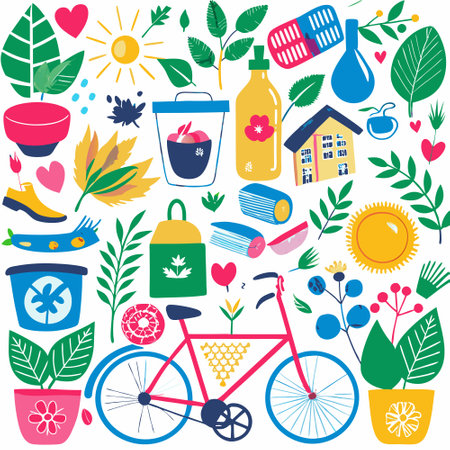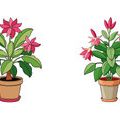Introduction: Why Upcycling Matters in Allotments
Allotments hold a cherished place in British culture, standing as green sanctuaries nestled within towns and cities where communities come together to grow, share, and connect. In recent years, there has been a growing recognition of the importance of sustainability and upcycling within these spaces. Upcycling—repurposing materials that might otherwise be discarded—has become more than just an eco-friendly trend; it is now woven into the very fabric of allotment life. The communal spirit found in UK allotments encourages resourcefulness, sharing surplus, and making do with what’s available. By embracing upcycling, plot holders not only reduce waste but also save money and preserve the character of their sheds and gardens. This approach aligns with the traditional ethos of “waste not, want not,” reflecting values passed down through generations. Sustainable organising in your shed isn’t simply about tidiness—it’s about respecting the environment, fostering creativity, and strengthening community bonds through practical action.
2. Repurposing Household Items for Shed Storage
Transforming everyday British household waste into practical storage solutions is not only environmentally conscious but also remarkably cost-effective. By upcycling common items, you can keep your allotment shed tidy and organised, all while reducing landfill contributions. Below, we explore several clever ideas that breathe new life into objects destined for the bin.
Mason Jars and Jam Jars
Empty glass jars from sauces or jams are perfect for storing seeds, nails, screws, or plant labels. Secure lids to the underside of shelves with a screw, and you have instant hanging storage—simply twist the jar on and off as needed. This keeps small items visible and within easy reach.
Plastic Milk Bottles and Drinks Cartons
Sturdy plastic bottles can be repurposed in numerous ways. Cut them in half to create scoops for compost or pet food, or use the bottom halves as pots for seedlings. Their handles make them particularly handy for carrying soil or fertiliser.
Ideas for Upcycled Plastic Bottles
| Item | Repurposed Use |
|---|---|
| 2-litre milk bottle | Scoop or watering can (poke holes in cap) |
| 500ml drinks bottle | Mini cloche for young plants |
Tin Cans
Wash out old baked bean tins or soup cans and attach them to a wooden board to form tool holders or pen pots. For a rustic touch, leave the labels off; for added charm, decorate with leftover paint. Remember to sand down any sharp edges for safety.
Biscuit Tins and Sweet Tubs
British households often have surplus biscuit tins after festive seasons. These tins make excellent containers for string, twine, plant ties, or even hand tools—keeping everything dry and rust-free.
Quick Reference Table: Upcycling at a Glance
| Household Waste Item | Shed Storage Solution |
|---|---|
| Mason/jam jars | Seed storage, screws/nails organiser |
| Milk bottles/cartons | Scoops, seedling pots, watering cans |
| Tin cans | Tool holders, pen pots |
| Biscuit tins/sweet tubs | Twine/tool containers |
A Practical Approach to Sustainability
By adopting these upcycling ideas in your allotment shed, you actively reduce waste while creating an orderly space tailored to your gardening needs. Start by surveying your recycling bin—you’ll likely discover materials ready for transformation into useful shed organisers.

3. DIY Projects Using Salvaged Materials
Embracing upcycling is a brilliant way to keep your allotment shed tidy while reducing waste. Here are some step-by-step project ideas using reclaimed timber, old pallets, and spare garden materials—resources commonly found around UK gardens and allotments.
Step 1: Gather Your Materials
Start by taking stock of what you have lying about: old pallets left from compost deliveries, weathered fence posts, broken tools, or even an unused wooden ladder. These items are ideal for repurposing into sturdy storage solutions.
Step 2: Prepare Reclaimed Timber & Pallets
If using pallets or scrap wood, check for loose nails and give everything a quick sand to avoid splinters. Don’t worry about perfection—a rustic look suits most sheds and blends well with the practical atmosphere of an allotment.
Wall-Mounted Tool Racks
Use sections of pallet slats to create simple wall-mounted racks. Fix horizontal slats to your shed wall using screws or strong nails, leaving gaps to slot in spades, forks, and hoes. Add cut-off sections of broom handles as pegs for hanging trowels or secateurs.
Shelf Units from Old Ladders
An old wooden ladder can be mounted horizontally to the wall as shelving. Simply secure it firmly at both ends and place planks across the rungs for additional shelf space—perfect for storing pots, fertilisers, and seed trays.
Upcycled Crate Storage
If you have surplus fruit crates or bread trays (often found at local markets), stack them to create modular storage units. Secure them together with cable ties or short screws for stability. These make excellent cubbyholes for gloves, string, labels, and other small bits.
Additional Tips
For extra sustainability points, use leftover paint or linseed oil to protect your creations against the damp British weather. Consider labelling shelves and racks with hand-painted signs made from offcuts—functional and charming!
By reimagining everyday scraps as useful organisational aids, you’ll not only declutter your shed but also contribute positively to the environment—all in true British allotment spirit.
Eco-Friendly Labelling and Organisation Tips
When it comes to keeping your allotment shed both tidy and sustainable, labelling plays a key role. Instead of relying on plastic or disposable labels, consider incorporating upcycled and eco-friendly alternatives that reflect the British respect for resourcefulness and nature. Here are some practical suggestions to help you organise seeds, tools, and shelves in a way thats both effective and gentle on the environment.
Choosing Sustainable Labelling Materials
The following table summarises some excellent choices for sustainable labelling materials commonly found in UK gardens and sheds:
| Material | Source | Best Uses | Advantages |
|---|---|---|---|
| Slate Fragments | Old roofing tiles, garden paths | Seed trays, plant rows, shelf edges | Weatherproof, reusable, classic look |
| Terracotta Pots (broken pieces) | Cracked pots or saucers | Row markers, tool hooks, seed jars | Biodegradable, rustic charm, easy to write on |
| Wooden Tags or Offcuts | Pallet wood, pruned branches, old lollipop sticks | Pots, drawers, hanging tags for tools | Compostable, customisable sizes/shapes |
Clever Labelling Techniques
Slate: Use chalk pencils or waterproof paint pens to write directly on slate fragments. These can be wiped clean and reused each season.
Terracotta Shards: Marker pens work well for writing names or dates on the curved surface of broken terracotta. Simply stick them into the soil or attach with twine.
Wooden Tags: Sand lightly and use pencil or non-toxic ink for long-lasting labels. Drill a hole for string if you want to hang them from shelves or pegs.
Sustainable Organisation Ideas for Sheds
Apart from labelling, think about how you store your items:
- Shelf Dividers: Use wooden offcuts as dividers between seed packets or tool types.
- Pots for Sorting: Repurpose old terracotta pots as containers for twine, gloves, or small hand tools.
- Wall Hooks: Attach slate pieces to walls as sturdy hooks for hanging larger equipment.
A Note on Maintenance
Sustainably-labelled items may need the occasional touch-up due to weathering in British climates. Keep a bit of chalk or spare wooden tags handy in your shed for quick fixes. By embracing these eco-friendly methods, your allotment shed will not only stay organised but also serve as a model of upcycling ingenuity in your local gardening community.
5. Community Sharing and Swapping Schemes
One of the most rewarding aspects of maintaining an allotment shed is the opportunity it provides for community connection and collaboration. Embracing upcycling and sustainable organising isn’t just about individual effort—it’s also about tapping into the collective spirit that has long been a hallmark of British allotment culture. By sharing surplus materials, tools, and know-how with fellow plot holders, you can reduce waste, save money, and foster stronger relationships within your local gardening community.
Bartering has deep roots in British tradition, particularly among neighbours who value resourcefulness and mutual support. Setting up informal swapping schemes for items such as spare pallets, old shelving, or excess jars and containers can make a real difference to the organisation of your shed—and to others’. These exchanges encourage creative reuse while ensuring that useful materials stay out of landfill. Many allotment groups already host seasonal swap days or maintain a communal noticeboard where members can advertise items available for exchange or donation.
Beyond physical goods, sharing advice on clever storage solutions or best practices for upcycling materials can be just as valuable. A simple conversation over the fence might lead to discovering a new way to repurpose an old crate, or spark ideas for building a tool rack from discarded timber. This exchange of knowledge not only benefits individuals but also strengthens the entire allotment community’s commitment to sustainability.
Organising these schemes needn’t be complicated—a WhatsApp group, a dedicated section in your allotment association newsletter, or even a chalkboard in the communal hut can all work well to keep everyone informed about what’s available or needed. The key is to nurture an environment where generosity and neighbourliness are encouraged, echoing the time-honoured sense of camaraderie that makes British allotments so special.
By making community sharing and bartering a regular part of your sustainable organising strategy, you’ll find that your shed becomes not only tidier and more efficient but also a hub of creativity and goodwill. In this way, upcycling takes on a social dimension—one that celebrates both environmental stewardship and the enduring value of looking out for one another.
6. Maintaining a Low-Waste Allotment Routine
Adopting upcycling and sustainable organising practices in your allotment shed is just the beginning—maintaining a low-waste routine throughout the British gardening year is where these efforts truly pay off. The key lies in developing habits and systems that keep clutter at bay while actively minimising waste as part of your ongoing routine.
Seasonal Decluttering and Reassessment
The UK’s changing seasons are an ideal prompt for regular shed check-ins. At the end of each season, set aside time to review what tools, pots, and materials you’ve accumulated. Be honest: if something hasn’t been used or repaired in months, consider upcycling it into something else useful, donating it to fellow plot holders, or recycling responsibly through local schemes.
Smart Storage Solutions
Keep things tidy with labelled boxes or repurposed containers for different categories—such as seeds, hand tools, and twine. Stackable crates (often found second-hand) and old biscuit tins make sturdy organisers. This not only reduces the urge to buy new storage products but also helps you see exactly what you have, avoiding duplicate purchases and unnecessary waste.
Composting and Waste Streams
Maintain a dedicated compost bin for plant trimmings and organic shed waste—egg cartons, cardboard seed packets, or even worn-out jute string can be composted if they’re not coated with plastic. Set up separate bins for recyclable plastics or metals (like spent seed trays or broken hand tools), ensuring nothing useful ends up in landfill unnecessarily.
Swaps and Community Sharing
Make use of allotment noticeboards or local gardening groups to swap surplus items—from excess seedlings to spare pots and garden furniture. This keeps useful resources circulating within your community instead of gathering dust in your shed.
Ongoing Mindfulness
The most sustainable sheds are those run with intention. Before bringing anything new onto your plot, ask whether it can be sourced second-hand or made from something you already own. By staying mindful about what enters—and leaves—your shed, you’ll foster an environment that’s organised, efficient, and truly low-waste all year round.

